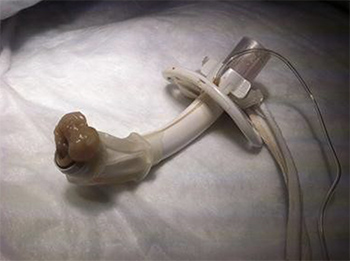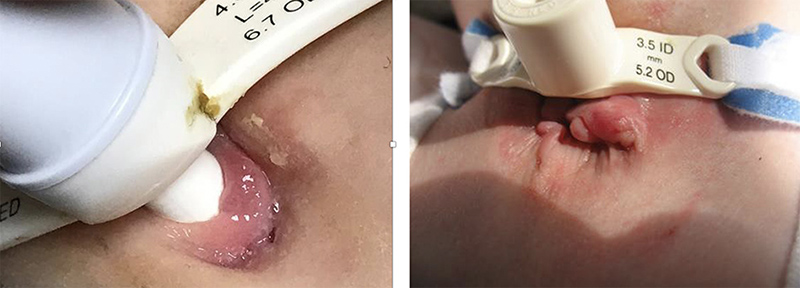Pediatric tracheostomy
Complications
Some complications might occur when taking care of a child with a tracheostomy tube. See below for a list of possible complications and things you can do to help.
Accidental decannulation
This is when the tracheostomy tube accidently comes out.
- Follow the steps for changing the tracheostomy tube, including trying one size smaller if unable to place same size tracheostomy tube.
- Remain calm, and if unable to replace tracheostomy tube, call 911.
- Bag-mask ventilation if child is in distress or ventilator dependent.
Mucus plugs

This happens when the mucus gets dry and hardens, blocking either the tracheostomy tube or windpipe.
To avoid mucous plugs, you should:
- Increase humidification
- Suction with 2-3 drops of normal saline
- Make sure your child is well hydrated.
Helpful hints: If your child experiences a lot of drooling he/she may become dehydrated. Speak to your ENT nurse practitioner, Gastroenterologist (GI), Pulmonologist, or Pediatrician about fluid replacement if needed.
Bleeding
Bleeding is usually related to the following:
- Suctioning too deep
- This causes injury to the windpipe. Blood/secretions from the tracheostomy may start out bright red and then become pink as bleeding decreases. After 24 hours secretions should become clear.
- Granuloma(s) (i.e. granulation tissue)
- This is sensitive tissue that can grow around the opening in the neck or in the windpipe as a reaction to the tracheostomy tube. Suctioning too deep can also cause granulomas to grow in the windpipe. This tissue bleeds easily when disturbed.

Helpful hints: If your child has bright red blood coming out from the tracheostomy stoma that is not changing to a lighter pink color or has difficulty breathing, call 911.

